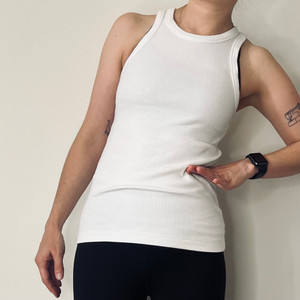How to take your body measurements: A concise guide
- Emma Cartmel
- Jun 30, 2024
- 4 min read
Updated: Nov 23, 2024
A handy guide for ensuring accurate body measurements that will help achieve the perfect fit.
This article is a paid-for post, and I have received compensation for writing and publishing this content. This post was originally featured on The thread. The opinions expressed in this article are my own and are based on my personal experience. Any sponsored content will always be clearly identified as such.

Taking body measurements always felt daunting, so I often avoided it. Even with a fashion design degree, our curriculum only skimmed the surface on this crucial skill, focusing instead on creating patterns for a “standard” size 10. However, a recent digital pattern-making course helped me overcome this. I had to take my full body measurements to draft my own blocks. This hands-on activity proved invaluable, offering insights into where measurements originate on patterns. Understanding these fundamentals clarified the pattern-making process even further and have made fitting and alterations that much easier.
Based on what I’ve learned, I’ve created a reference post—a handy guide for myself and fellow sewists and pattern makers. It will hopefully help ensure accurate body measurements that will achieve that perfect fit.
Keep scrolling to find out more about...
What you will need?
Flexible measuring tape
Mirror
Narrow elastic
Pen, or something to record your measurements with
A helping hand for those tricky back measurements. Alternatively, grab some sticky tape.
Preparation
Wear something that is fitted but not overly tight or compressive as this can distort your measurements.
Stand straight, preferably in front of a mirror, and maintain proper posture.
Key body measurements:

I recommend taking your measurements in this order, or as close to, as it will assist in the creation of reference points that will provide more accurate measurements.
1. Waist circumference: Around the narrowest part of the torso. If you are unsure what point this is, try bending to the side, and the crease is typically the natural waist.
Tip: Take a narrow piece of elastic and tie this around your waist. Check in the mirror that this is placed perfectly horizontal (parallel to the floor). This will act as a reference point that you will come back to.
2. Chest circumference: Around the chest from under the arms at the armpit level. Keep your arms relaxed by your side while taking this measurement.
3. Bust circumference: Around the fullest part of the bust.
4. Bust height: From the nape of the neck down the chest to the fullest part of the bust.
Tip: I marked the nape of the neck with a marker as I found I came back to this point a couple of times. I had a necklace on and interestingly found this useful for identifying the nape of the neck.
5. Shoulder width (back): Across the back from shoulder point to shoulder point. The tape may curve upwards slightly for this measurement.
Tip: When trying to identify the shoulder point think about the positioning of the shoulder seams on a tight fitting t-shirt. I recommend marking the shoulder point in some way, whether it be with a pen, or a pin, as you will come back to this point again.
6. Back width: Across the back from armpit crease to armpit crease. Maintain relaxed arms by your side while taking this measurement.
7. Waist length (front): From the nape of neck down the chest (over the fullest part of the bust) to the waist.
8. Waist length (back): From the nape of the neck down the back to the waist.
9. Hip circumference: Around the fullest part of your bottom.
Tip: I recommend marking the hip level, whether it be with a pen, or a pin, as you will come back to this point again also.
10. Bicep circumference: Around the fullest part of the upper arm.
11. Elbow length: From shoulder point to the base of the elbow. Bend the arm for this measurement, ensuring the forearm is parallel to the floor.
12. Sleeve length:From shoulder point to the base (or lowest point) of the elbow then continuing on to the wrist. Keep the arm bent for this measurement also, ensuring the forearm is parallel to the floor.
13. Hip depth: From the side of the body from the waist to hip level.
14. Thigh circumference: Around the fullest part of the upper leg.
15. Knee circumference: Around the fullest part of the knee.
16. Calf circumference: Around the fullest part of the calf.
17. Knee length: From the side of the body from the waist to the knee level.
18. Trouser length: From the side of the body from the waist to the floor, or the top of your foot
19. Inseam: From the crotch and straight down to the height of the ankle bone.
20. Crotch depth:
Option 1: From the waist to the crotch in between your legs (eg. that point where the seam of trousers typically intersect).
Option 2: Taken while sitting on something flat and hard and measuring from the waist down to the surface you are sitting on.
Tip: If you take both of these measurements and there is a difference, I would recommend simply averaging the two.
21. Standing height: From the top of the head to the ground.
Please get in touch or leave me a comment. I would love to know if you found this article helpful.
Thanks for reading.
Emma xx
This is a personal blog. Any views or opinions contained on this site are my own. Unless stated otherwise, I am not affiliated with any brands, products, or organisations mentioned, and do not receive any sponsorship, payment, or other compensation for any of the content on this site.








Comments